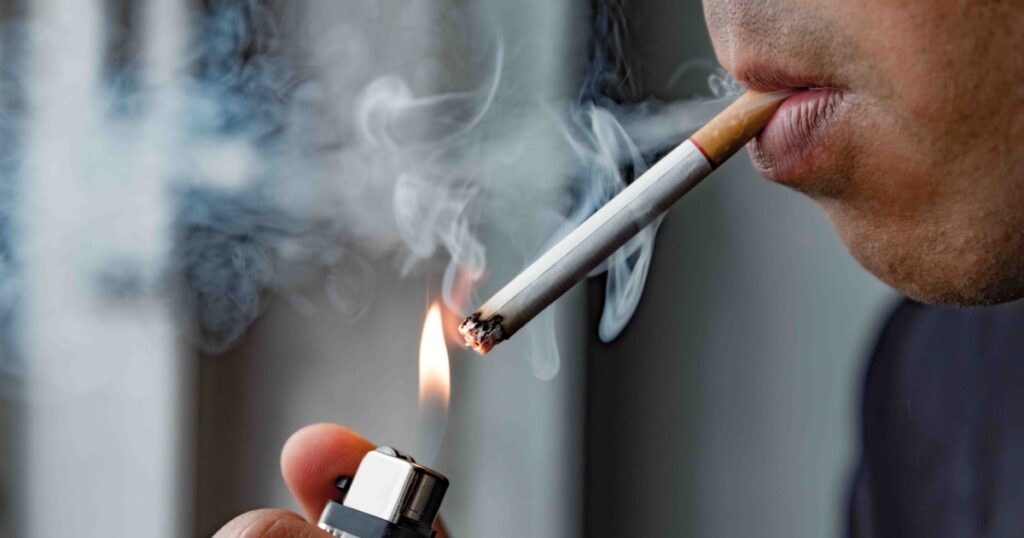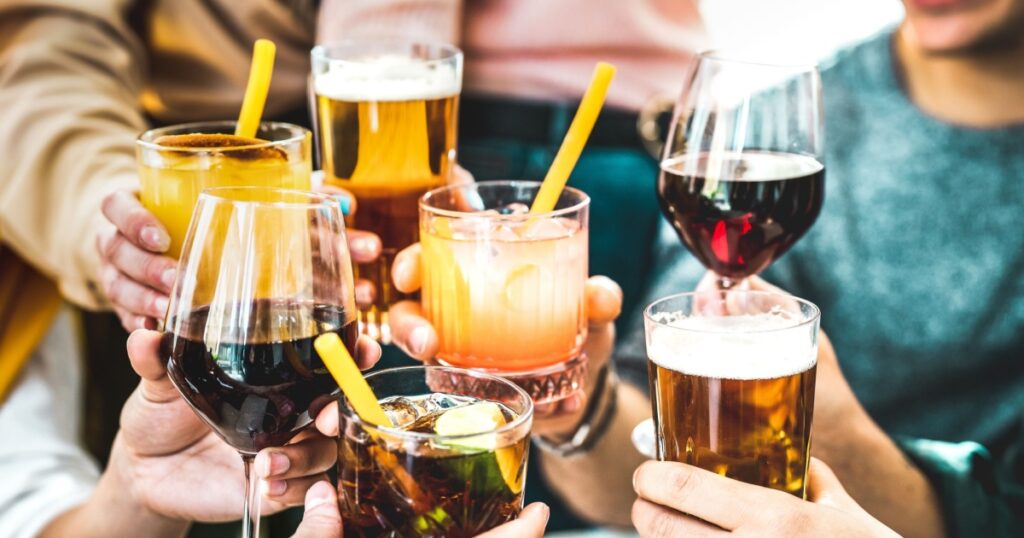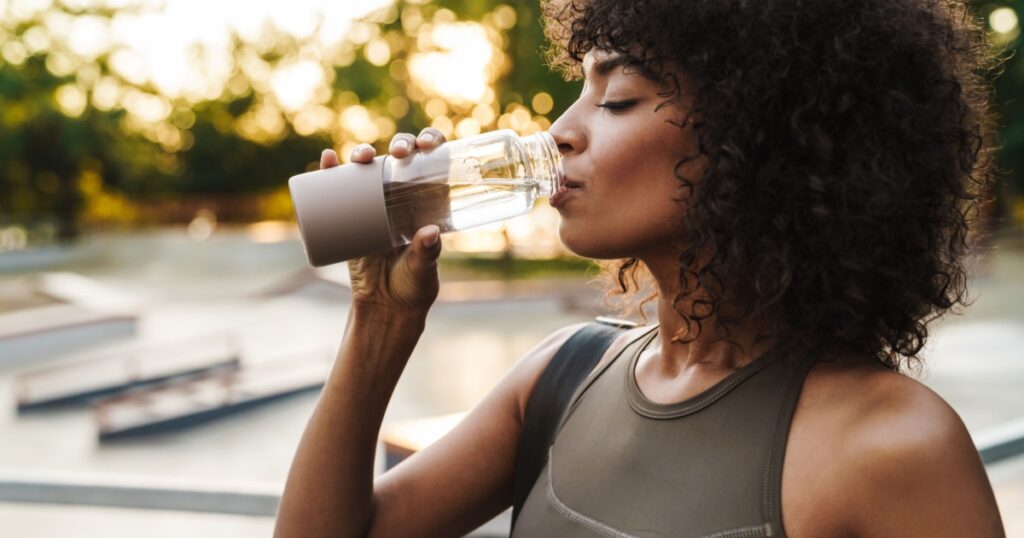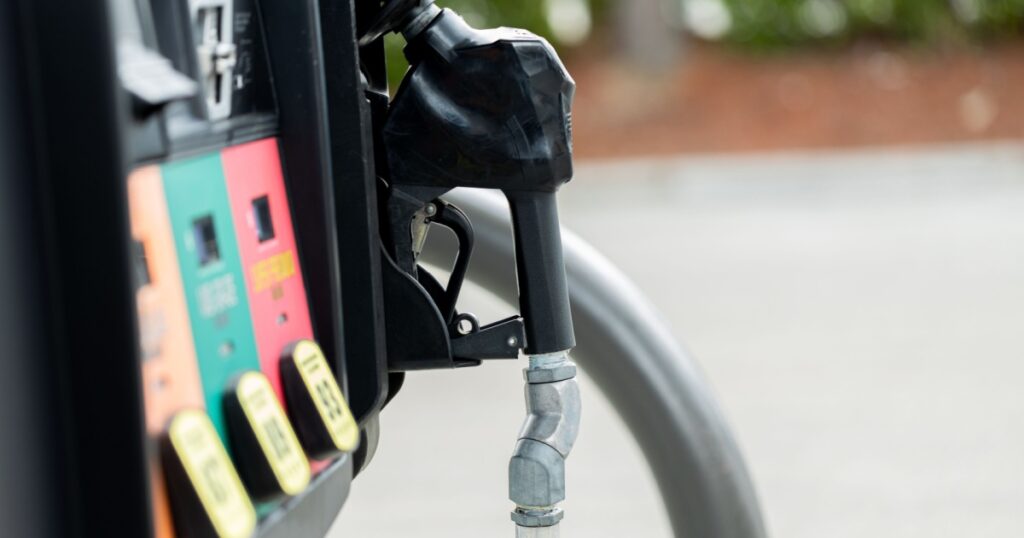We all know that certain activities and habits such as smoking, drinking, and overeating can elevate the risk of cancer. However, there are numerous everyday activities that we engage in without realizing that they can also contribute to our susceptibility to cancer. Cancer is the second leading cause of death in the United States, just after heart disease. It is crucial to understand the risk factors and take steps to protect ourselves. In this article, we will explore 38 everyday activities that have been identified as potential contributors to cancer.
38 Everyday Things That Are Linked to Cancer

Cancer is a threat that seems to be growing every single year. There are many seemingly everyday things – activities, habits, and situations – that are linked to an increased risk of cancer. Thankfully, knowing what these are is the first step to taking control and decreasing your risk.
Read More: After being told to ‘soldier on’ through postpartum breast changes, mom is dying of breast cancer
1. Increased sun exposure

While sunlight can be enjoyable, prolonged exposure to harmful ultraviolet (UV) rays can damage the skin and lead to skin cancer. It is essential to wear sunscreen with an SPF of 30 or higher, avoid peak UV radiation hours, and utilize protective clothing when spending time outdoors. (1)
2. Fake tanning

Indoor tanning, including tanning beds, can be as dangerous as sun exposure. Studies have shown that even a single session in a tanning bed can increase the risk of melanoma by 20%. Self-tanning lotions or sunless tanning booths are safer alternatives.
3. Frequent flying

Individuals who frequently travel by air, such as flight attendants and pilots, have a higher risk of various cancers due to exposure to cosmic ionizing radiation at higher altitudes. However, occasional flyers are unlikely to be exposed to significant levels of radiation. (2)
4. Smoking

Cigarette smoke contains over 4,800 toxic substances, including 70 carcinogens. Smoking significantly increases the risk of lung cancer, as well as various other types of cancer. Quitting smoking can dramatically reduce the risk of developing smoking-related diseases. (3)
5. Excessive alcohol consumption

Consistent and heavy alcohol consumption has been linked to an increased risk of cancers such as breast, liver, and esophageal cancer. Moderation is key to minimize the impact of alcohol on your health. (4)
Read More: Treatment Triggers Self-Destruction of Pancreatic Cancer Cells Within a Month
6. Exposure to secondhand smoke

Even if you don’t smoke, being exposed to secondhand smoke can elevate your risk of cancer. Avoiding places where smoking is allowed and educating smokers about the dangers may help protect against this risk. (5)
7. Being overweight

Obesity has been associated with an increased risk of several types of cancer, including liver, pancreatic, kidney, and breast cancer. Maintaining a healthy weight through proper diet and regular exercise can significantly reduce this risk. (6)
8. Regular nail salon visits

Nail polishes and chemicals used in nail salons have been found to contain cancer-causing compounds. Both customers and manicurists are at risk, with manicurists also being exposed to dangerous fumes. Choosing salons that provide proper safety measures can help mitigate this risk. (7)
9. Drinking unfiltered tap water

Tap water may contain harmful compounds such as arsenic, disinfection byproducts, and nitrates. Investing in a water filter and regularly checking the quality of your tap water can minimize exposure to these contaminants. (8)
10. Sedentary lifestyle

Lack of physical activity increases the risk of various cancers, including colon, breast, and endometrial cancer. Engaging in regular exercise can boost the immune system, reduce inflammation, and lower the levels of certain growth factors associated with cancer development.
Read More: 5 Cancer Symptoms To Look Out For When You Eat
11. Night Shifts

Working night shifts can disrupt your body’s natural sleep-wake cycle, which may increase the risk of certain cancers. If you work at night, try to get as much sleep as possible during the day and avoid exposure to bright light before bedtime. (9)
12. Dry cleaning

Dry cleaning is a process that uses chemicals to remove dirt, stains, and odors from clothing. The solvents used in dry cleaning can be toxic and have been linked to an increased risk of cancer. If you need to have your clothes dry cleaned, choose a cleaner that uses water-based solvents instead of perchloroethylene (PERC). (10)
13. Radon exposure

Radon is a naturally occurring radioactive gas that can seep into your home through cracks in the foundation or basement walls. It’s also found in some types of building materials, such as granite countertops and concrete. Long-term exposure to high levels of radon has been linked to lung cancer. If you live in an area with high radon levels, test your home for the gas and take steps to reduce it if necessary. (11)
14. HPV

Human papillomavirus (HPV) is a sexually transmitted infection that can cause cervical cancer. It’s also linked to other types of cancer, including vaginal, vulvar, penile and anal cancers. The HPV vaccine is recommended for girls and boys ages 11 to 12, but it can be given as early as age 9. If you’re older than 26 and haven’t been vaccinated, talk to your doctor about whether it’s right for you. (12)
15. Eating Processed Meat

Processed meats, such as bacon, hot dogs and lunchmeat, have been linked to an increased risk of colon cancer. The American Cancer Society recommends limiting processed meat consumption to no more than 2 ounces per day. If you eat more than that, try to cut back by substituting other protein sources like fish or poultry. (13)
16. Drinking Too-Hot Beverages

Drinking hot beverages, such as coffee or tea, at temperatures above 149 degrees Fahrenheit has been linked to an increased risk of esophageal cancer. The American Cancer Society recommends that you let your drink cool for a few minutes before taking a sip. If you’re worried about the temperature of your beverage, use a thermometer to check it. (14)
17. Heating Food In Takeout Containers

When you heat food in a takeout container, the chemicals in the plastic can leach into your meal. This is especially true if the container is made of polystyrene (Styrofoam) or polyvinyl chloride (PVC). Both of these materials have been linked to cancer and other health problems. If you want to reheat leftovers, transfer them to a glass or ceramic dish first. (15)
18. Too Much Red Meat

Red meat is a good source of protein, but eating too much can increase your risk of heart disease and cancer. The American Heart Association recommends that you limit your intake of red meat to no more than 18 ounces per week. If you’re concerned about the amount of red meat in your diet, try substituting it with fish or poultry instead.
19. Unprotected Sex

Unprotected sex can lead to unwanted pregnancies and sexually transmitted infections (STIs). If you’re not ready for a baby or don’t want one at all, use birth control every time you have sex. If you’re in a monogamous relationship and both partners have been tested for STIs, then using condoms may not be necessary. However, if either partner has had multiple partners or has not been tested recently, it’s best to use condoms until both partners are tested again. (16)
20. Using Weed Killer

If you have a garden or lawn, it’s important to keep it looking nice. However, using weed killer can be dangerous for your health and the environment. Some weed killers contain chemicals that can cause cancer or other health problems if they get into your body through your skin or eyes. Instead of using weed killer, try pulling weeds by hand or using a natural alternative like vinegar or salt water. (17)
Read More: Vulvar Cancer: How One Mom’s Skin Condition Turned into a Dangerous Cancer
21. Exposure to Air Pollution

Air pollution can cause a variety of health problems, including asthma and other respiratory conditions. If you live in an area with high levels of air pollution, try to avoid spending time outside when the air quality is poor. If you must go outside during these times, wear a mask or other protective gear to help filter out some of the pollutants. (18)
22. Consuming Trans Fats

Trans fats are a type of fat that is created when liquid vegetable oils are partially hydrogenated. This process makes them more solid and stable, which means they can be used in a variety of processed foods without going rancid. However, trans fats have been linked to an increased risk for heart disease and other health problems. (19)
23. Asbestos Exposure

Asbestos is a naturally occurring mineral that was used in many building materials until the 1970s. It was also used as an insulator in homes and other buildings. When asbestos fibers are inhaled, they can cause lung cancer and mesothelioma (a rare cancer of the lining of the chest or abdomen). If you live in an older home or work in construction, it’s important to take precautions to avoid exposure to asbestos. (20)
24. Chewing Tobacco

Chewing tobacco is a type of smokeless tobacco that comes in the form of loose leaf or plug. It’s also known as snuff or dip. Chewing tobacco contains nicotine, which is an addictive drug found in cigarettes and other tobacco products. It can cause cancer of the mouth, throat, esophagus, pancreas and bladder. (21)
25. Diabetes

Diabetes is a condition in which your body does not produce enough insulin or cannot use it properly. Insulin is a hormone that helps regulate blood sugar levels. If you have diabetes, your blood sugar levels can become too high (hyperglycemia) or too low (hypoglycemia). Both conditions can cause serious health problems over time. (22)
Read More: There’s One Way To Check For Ovarian Cancer That Nobody Talks About – Here’s Why
26. Radiation Exposure

Radiation exposure is the process of being exposed to ionizing radiation. Ionizing radiation can come from many sources, including medical tests and treatments, nuclear power plants, nuclear weapons and fallout from nuclear accidents. It can also come from natural sources such as radon gas in homes or buildings. (23)
27. Diesel Exhaust

Diesel exhaust is a mixture of gasses and fine particles that are produced when diesel fuel is burned. The exhaust contains more than 40 chemicals that are known or suspected to cause cancer, including benzene, formaldehyde and acetaldehyde. (24)
28. Sleeping next to your phone

Sleeping next to your phone can be dangerous. The electromagnetic radiation emitted by cell phones has been linked to brain cancer, infertility and other health problems. It’s best to keep your phone at least a few feet away from you while you sleep. (25)
29. Paraben-Containing Makeup

Parabens are a group of chemicals that are used as preservatives in many personal care products. They can mimic estrogen in the body and have been linked to breast cancer. Some studies have also suggested that parabens may increase the risk of other types of cancer, including skin cancer. (26)
30. Phthalates

Phthalates are a group of chemicals that are used to make plastics more flexible. They can be found in many personal care products, including nail polish, hair spray and perfume. Phthalates have been linked to reproductive problems in animals and humans. They may also increase the risk of breast cancer. (27)
Read More: These Close-Up Images Show Exactly What Different Types of Skin Cancer Look Like
31. Soda and Diet Soda

Soda and diet soda are both high in sugar and calories. Drinking too much of either can lead to weight gain, which is a risk factor for many types of cancer. Some studies have also suggested that drinking soda may increase the risk of certain types of cancer, including pancreatic cancer. (28)
32. Plastic Water Bottles

Plastic water bottles are made from a type of plastic called polyethylene terephthalate (PET). PET is a petroleum-based product that can leach chemicals into the water it holds. Some studies have suggested that these chemicals may increase the risk of certain types of cancer, including breast and prostate cancer. Most studies, however, are inconclusive and more research is needed. (29)
33. Not Drinking Enough Water

Drinking enough water is important for many reasons, including maintaining a healthy weight and preventing dehydration. Some studies have suggested that not drinking enough water may increase the risk of certain types of cancer, including bladder and breast cancer. Again, this requires more research to be conclusive. (30)
34. Pumping Gas

Pumping gas is a common activity that many people do every day. However, it can be dangerous if you don’t take the proper precautions. When you pump gas, you are exposed to a variety of chemicals that can cause health problems over time. Some studies have suggested that these chemicals may increase the risk of certain types of cancer, including lung and bladder cancer. (31)
Read More: How to Do a Self Breast Exam At Home: Signs of Breast Cancer
35. Scented Candles

Scented candles are a popular way to add fragrance to your home. However, they can be dangerous if you don’t take the proper precautions. When you burn a scented candle, it releases chemicals into the air that can cause health problems over time. Some studies have suggested that these chemicals may increase the risk of certain types of cancer, including lung and bladder cancer. (33)
36. Sleeping with the TV on

Sleeping with the TV on can be dangerous if you don’t take the proper precautions. When you sleep, your body needs to rest and recharge. If you’re constantly exposed to light from a screen, it can interfere with this process and make it harder for you to fall asleep. This is especially true if you have trouble falling asleep in general. Light at night has been associated with poorer health, including obesity and cancer risk. (34)
37. Not Flossing

Flossing is an important part of your oral hygiene routine. It helps remove food particles that get stuck between your teeth and gums, which can lead to cavities and gum disease. If you don’t floss regularly, these particles can build up and cause problems down the road. (35)
The Bottom Line

These are just a few examples of everyday activities that have been linked to an increased risk of cancer. It is important to remember that everyone’s susceptibility may vary depending on individual factors such as genetics and overall health. The point isn’t to cause fear, but rather to be aware so that you can make changes to the things that you can control. By being aware of these activities and taking proactive steps to mitigate the associated risks, we can reduce our chances of developing cancer and lead healthier lives.
Read More: Why Pancreatic Cancer Is On the Rise
Sources
- “Sunlight.” National Cancer Institute
- “Cancer risks from cosmic radiation exposure in flight: A review.” NCBI. Christopher Scheibler, Sneh M. Toprani, Irina Mordukhovich, Matthew Schaefer, Steven Staffa, Zachary D. Nagel and Eileen McNeely. November 22, 2022
- “Health Risks of Smoking Tobacco.” National Cancer Institute
- “Alcohol and Cancer Risk.” national Cancer Institute
- “Secondhand Tobacco Smoke (Environmental Tobacco Smoke).” National Cancer Institute
- “Physical activity, obesity and sedentary behavior in cancer etiology: epidemiologic evidence and biologic mechanisms.” NCBI. Christine M. Friedenreich, Charlotte Ryder‐Burbidge, and Jessica McNeil. August 18, 2020.
- “Cancer and Other Health Risks at Nail Salons.” Moffitt. April 21, 2017.
- “Bladder cancer, drinking water source, and tap water consumption: a case-control study.” Pubmed. K P Cantor, et al. December 1987.
- “A Narrative Review of the Carcinogenic Effect of Night Shift and the Potential Protective Role of Melatonin.” NCBI. Elvina C Lingas. August 11, 2023.
- “Association between residential proximity to PERC dry cleaning establishments and kidney cancer in New York City.” Pubmed. Jing Ma, Lawrence Lessner, Judith Schreiber and David O Carpenter. 2009.
- “Radon and Cancer.” National Cancer Institute
- “HPV and Cancer.” National Cancer Institute
- “Consumption of red meat and processed meat and cancer incidence: a systematic review and meta-analysis of prospective studies.” Pubmed. Maryam S Farvid, Elkhansa Sidahmed, Nicholas D Spence, Kingsly Mante Angua, Bernard A Rosner and Junaidah B Barnett. September 2021.
- “High-temperature beverages and Foods and Esophageal Cancer Risk — A Systematic Review.” NCBI. Farhad Islami, Paolo Boffetta, JianSong Ren, Leah Pedoeim, Dara Khatib and Farin Kamangar. 2010.
- “Should I put plastic containers in the microwave?” Canadian Cancer Society
- “Global disease burden attributed to unsafe sex in 204 countries and territories from 1990 to 2019: results from the Global Burden of Disease Study 2019.” NCBI. Pei Qiu, Hairong He, Yuting Zhao, Zejian Yang, Shouyu Li, Peng Ni, Yujie Guo,2 Chao Ji, Chenchen Zhang, Huimin Zhang, Can Zhou and Bo Wang. August 9, 2023.
- “Herbicides and cancer.” Pubmed. H I Morrison, K Wilkins, R Semenciw, Y Mao and D Wigle. December 1992.
- “Outdoor Air Pollution and Cancer: An Overview of the Current Evidence and Public Health Recommendations.” NCBI. Michelle C. Turner, PhD, Zorana J. Andersen, PhD, Andrea Baccarelli, MD, MPH, PhD, W. Ryan Diver, MSPH, Susan M. Gapstur, PhD, C. Arden Pope, III, PhD, Diddier Prada, MD, PhD,Jonathan Samet, MD MS, George Thurston, ScD and Aaron Cohen, DSc. February 2022.
- “Dietary trans-fatty acid intake in relation to cancer risk: a systematic review and meta-analysis.” Pubmed. Nathalie Michels, Ina Olmer Specht , Berit L Heitmann, Veronique Chajès and Inge Huybrechts. June 2021.
- “Asbestos Exposure and Cancer Risk.” National Cancer Institute
- “Health Risks of Smokeless Tobacco.” American Cancer Society
- “Diabetes and Cancer.” NCBI. Edward Giovannucci, MD, SCD, David M. Harlan, MD, Michael C. Archer, MA, PHD, DSC, Richard M. Bergenstal, MD, Susan M. Gapstur, PHD, Laurel A. Habel, PHD, Michael Pollak, MD, Judith G. Regensteiner, PHD. and Douglas Yee, MD. July 2010.
- “Radiation Exposure and Cancer Risk.” American Cancer Society
- “Diesel Exhaust and Cancer Risk.” American Cancer Society
- “Cellular (Cell) Phones.” American Cancer Society
- “Minireview: Parabens Exposure and Breast Cancer.” NCBI. Emily Hager, et al. February 2022.
- “Phthalate Exposure and Breast Cancer Incidence: A Danish Nationwide Cohort Study.” Pubmed. Thomas P Ahern, Anne Broe, Timothy L Lash, Deirdre P Cronin-Fenton, Sinna Pilgaard Ulrichsen, Peer M Christiansen, Bernard F Cole, Rulla M Tamimi, Henrik Toft Sørensen, and Per Damkier. July 2019.
- “Soft drinks, aspartame, and the risk of cancer and cardiovascular disease1,2.” NCBI. Dagfinn Aune. November 7, 2012.
- “Does using plastic bottles and containers cause cancer?” Cancer Research UK
- “Investigation of the Association between Drinking Water Habits and the Occurrence of Women Breast Cancer.” NCBI. Yael Keren, Racheli Magnezi, Moshe Carmon, and Yona Amitai. October 2020.
- “Benzene Exposure and Cancer Risk from Commercial Gasoline Station Fueling Events Using a Novel Self-Sampling Protocol.” NCBI. Andrew N. Patton, Misti Levy-Zamora, Mary Fox and Kirsten Koehler. February 2021.
- “Chemicals and Cancer.” American Cancer Society
- “Scented Candles as an Unrecognized Factor that Increases the Risk of Bladder Cancer; Is There Enough Evidence to Raise a Red Flag?.” Pubmed. Jan Adamowicz, Kajetan Juszczak , Slawomir Poletajew , Shane Vontelin Van Breda, Marta Pokrywczynska and Tomasz Drewa. October 2019.
- “Light at night in older age is associated with obesity, diabetes, and hypertension.” Oxford Academy. Minjee Kim, Thanh-Huyen Vu, Matthew B Maas, Rosemary I Braun, Michael S Wolf, Till Roenneberg, Martha L Daviglus, Kathryn J Reid and Phyllis C Zee. June 22, 2022.
- “Gum disease linked to an increased risk for cancer.” Harvard. October 1, 2020.

